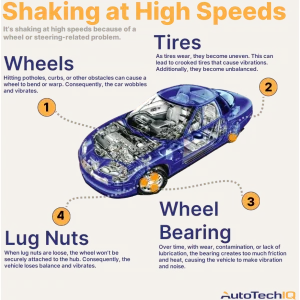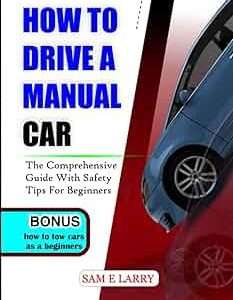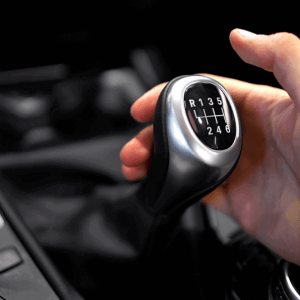Determining the type of transmission in your car is crucial for maintenance, repairs, and even modifications. It’s not always obvious. This guide will walk you through several methods to identify your transmission type. Knowing this information can save you time and money.
Method 1: Check Your Owner’s Manual
The owner’s manual is often the easiest and most reliable source of information. Look for a section on vehicle specifications. It should clearly state whether your car has an automatic or manual transmission. Sometimes, it will even specify the exact model of the transmission.
Don’t have the manual? No problem! You can often find a digital copy online.
Method 2: Examine the Gear Shifter
The gear shifter provides a visual clue. A manual transmission will have a gear stick with a clutch pedal. An automatic transmission will typically have a shifter with positions like Park (P), Reverse (R), Neutral (N), and Drive (D).
Manual Transmission: Look for a gear stick and a clutch pedal.
Automatic Transmission: Look for a shifter with P, R, N, and D.
Method 3: Check the Vehicle Identification Number (VIN)
The VIN is a unique identifier for your car. It can be found on the dashboard (visible through the windshield) or on the driver’s side doorjamb. You can decode the VIN using online VIN decoders. Some decoders will provide information about the transmission.
VIN decoders are readily available online. Just search for “VIN decoder.”
- Find your VIN.
- Go to a reputable VIN decoder website.
- Enter your VIN.
- Look for transmission information in the results.
Method 4: Consult a Mechanic
If you’re still unsure, a qualified mechanic can easily identify your transmission. They have the expertise and resources to quickly determine the type. This is a reliable, albeit potentially costly, option.
FAQ: Frequently Asked Questions
Q: What’s the difference between an automatic and a manual transmission?
An automatic transmission shifts gears automatically, without driver input. A manual transmission requires the driver to manually shift gears using a clutch pedal and gear stick.
Q: Can I convert my car from automatic to manual?
Yes, it’s possible, but it’s a complex and expensive process. It involves replacing the transmission, installing a clutch pedal, and making other modifications.
Q: Where can I find a VIN decoder?
Many websites offer free VIN decoding services. Just search online for “free VIN decoder.” Be sure to use a reputable website.
Determining the type of transmission in your car is crucial for maintenance, repairs, and even modifications. It’s not always obvious. This guide will walk you through several methods to identify your transmission type. Knowing this information can save you time and money.
The owner’s manual is often the easiest and most reliable source of information. Look for a section on vehicle specifications. It should clearly state whether your car has an automatic or manual transmission. Sometimes, it will even specify the exact model of the transmission.
Don’t have the manual? No problem! You can often find a digital copy online.
The gear shifter provides a visual clue. A manual transmission will have a gear stick with a clutch pedal. An automatic transmission will typically have a shifter with positions like Park (P), Reverse (R), Neutral (N), and Drive (D).
Manual Transmission: Look for a gear stick and a clutch pedal.
Automatic Transmission: Look for a shifter with P, R, N, and D.
The VIN is a unique identifier for your car. It can be found on the dashboard (visible through the windshield) or on the driver’s side doorjamb. You can decode the VIN using online VIN decoders. Some decoders will provide information about the transmission.
VIN decoders are readily available online. Just search for “VIN decoder.”
- Find your VIN.
- Go to a reputable VIN decoder website.
- Enter your VIN.
- Look for transmission information in the results.
If you’re still unsure, a qualified mechanic can easily identify your transmission. They have the expertise and resources to quickly determine the type. This is a reliable, albeit potentially costly, option.
An automatic transmission shifts gears automatically, without driver input. A manual transmission requires the driver to manually shift gears using a clutch pedal and gear stick.
Yes, it’s possible, but it’s a complex and expensive process. It involves replacing the transmission, installing a clutch pedal, and making other modifications.
Many websites offer free VIN decoding services. Just search online for “free VIN decoder.” Be sure to use a reputable website.
My Personal Experience: The Case of the Mysterious Mustang
I remember when I bought my first car, a used Mustang from a guy named Earl. Earl wasn’t exactly forthcoming with details. I was so excited about the car itself that I completely forgot to ask about the transmission!
I initially assumed it was an automatic, because that’s what I was used to driving. However, the gear shifts felt… different. They were sluggish and unresponsive. I started to suspect something was amiss.
My first instinct was to check the owner’s manual, but of course, Earl hadn’t given me one. So, I moved on to the VIN.
I found the VIN on the dashboard and plugged it into a free VIN decoder website. It gave me a ton of information about the car, but frustratingly, nothing about the transmission type! I was starting to get annoyed.
Next, I examined the gear shifter more closely. It had the standard P, R, N, and D, but also a “2” and a “1.” I’d never seen that before on an automatic.
I decided to bite the bullet and take it to a mechanic. I went to a local shop run by a guy named Tony. Tony took one look at the shifter and said, “That’s an old-school automatic with manual shift capabilities. You can shift it yourself if you want, using the ‘2’ and ‘1’ positions.”
Turns out, the sluggish shifting I was experiencing was just a sign of an aging transmission. Tony recommended a fluid flush and a tune-up, which I did. The car shifted much smoother afterward.
The lesson I learned? Always ask about the transmission type before buying a car! And don’t be afraid to consult a mechanic if you’re unsure. It saved me a lot of headache in the long run.




